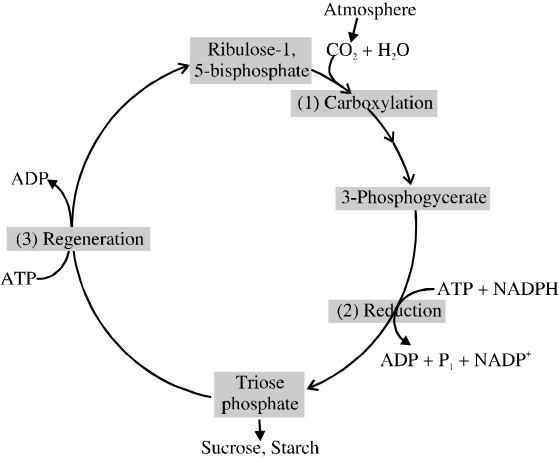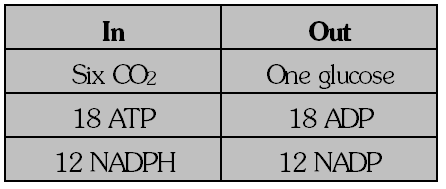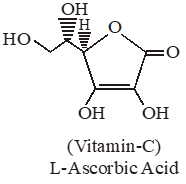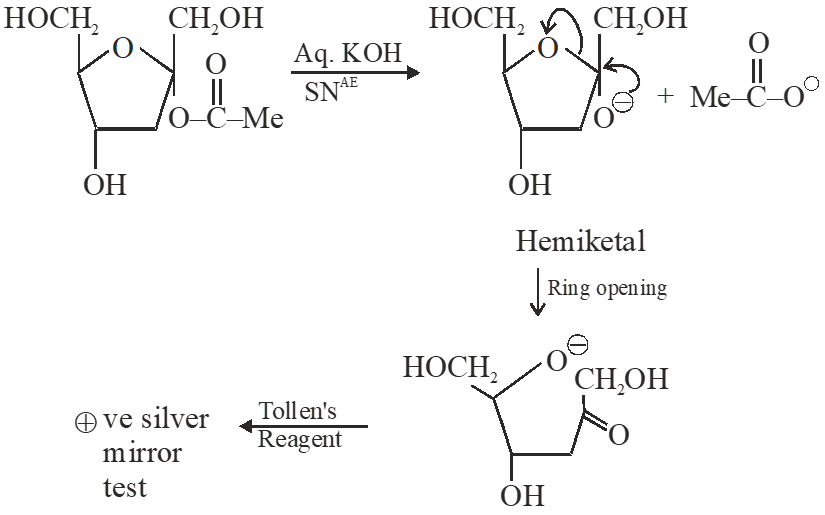JEE Main Previous Year Papers Questions of Chemistry with Solutions are available at eSaral. Practicing JEE Mains chapter wise questions of Chemistry will help the JEE aspirants in realizing the question pattern as well as help in analyzing weak & strong areas.
Simulator
Previous Years AIEEE/JEE Main Questions
Q. The two functional groups present in a typical carbohydrate are :-
(1) >C = O and –OH (2) –OH and –CHO (3) –OH and –COOH (4) –CHO and –COOH
AIEEE-2009
Ans. (2)
Q. Biurest test is not given by :-
(1) proteins (2) carbohydrates (3) polypeptides (4) urea
AIEEE-2010
Ans. (2)
Q. The presence or absence of hydroxy group on which carbon atom of sugar differentiates RNA and DNA?
(1) 3rd (2) 4th (3) 1st (4) 2nd
AIEEE-2011
Ans. (4)
Q. The change in the optical rotation of freshly prepared solution of glucose is known as :-
(1) tautomerism (2) racemisation (3) specific rotation (4) mutarotation
AIEEE-2011
Ans. (4)
Q. Which one of the following statements is correct ?
(1) All amino acids except glutamic acid are optically active
(2) All amino acids except lysine are optically active
(3) All amino acids are optically active
(4) All amino acids except glycine are optically active
AIEEE-2012
Ans. (4)
Q. Synthesis of each molecule of glucose in photosynthesis involves :-
(1) 18 molecules of ATP
(2) 10 molecules of ATP
(3) 8 molecules of ATP
(4) 6 molecules of ATP
JEE Main -2013
Ans. (1)
Six rounds of the Calvin cycle are required, because one carbon atom is reduced in each round. Twelve molecules of ATP are expended. An additional six molecular of ATP are spent in regenerating ribulose-1, 5-biphosphate
$6 \mathrm{CO}_{2}+18 \mathrm{ATP}+12 \mathrm{NADPH}+12 \mathrm{H}_{2} \mathrm{O} \rightarrow$
$\mathrm{C}_{6} \mathrm{H}_{12} \mathrm{O}_{6}+18 \mathrm{ADP}+18 \mathrm{P}_{\mathrm{i}}+12 \mathrm{NADP}+6 \mathrm{H} \oplus$
Reference : NCERT 11th class chapter-13 (Photosynthesis Pg. 217, 218 in higher plants.
Calvin cycle where sugar is synthesised is as follows :
 The Calvin cycle proceeds in three stages (1) carboxylation, during which $\mathrm{CO}_{2}$ combines with ribulose-1.5-bisphosphate (2) reduction, during which carbohydrate is formed at the expense of the photochemically made ATP and NADPH and (3) regeneration during which the $\mathrm{CO}_{2}$ acceptor ribulose-1,5-bisphosphate is formed again so that the cylcle continues.
It might help you to understand all of this if we look at what goes in and what comes out of the Calvin cycle.
The Calvin cycle proceeds in three stages (1) carboxylation, during which $\mathrm{CO}_{2}$ combines with ribulose-1.5-bisphosphate (2) reduction, during which carbohydrate is formed at the expense of the photochemically made ATP and NADPH and (3) regeneration during which the $\mathrm{CO}_{2}$ acceptor ribulose-1,5-bisphosphate is formed again so that the cylcle continues.
It might help you to understand all of this if we look at what goes in and what comes out of the Calvin cycle.

 The Calvin cycle proceeds in three stages (1) carboxylation, during which $\mathrm{CO}_{2}$ combines with ribulose-1.5-bisphosphate (2) reduction, during which carbohydrate is formed at the expense of the photochemically made ATP and NADPH and (3) regeneration during which the $\mathrm{CO}_{2}$ acceptor ribulose-1,5-bisphosphate is formed again so that the cylcle continues.
It might help you to understand all of this if we look at what goes in and what comes out of the Calvin cycle.
The Calvin cycle proceeds in three stages (1) carboxylation, during which $\mathrm{CO}_{2}$ combines with ribulose-1.5-bisphosphate (2) reduction, during which carbohydrate is formed at the expense of the photochemically made ATP and NADPH and (3) regeneration during which the $\mathrm{CO}_{2}$ acceptor ribulose-1,5-bisphosphate is formed again so that the cylcle continues.
It might help you to understand all of this if we look at what goes in and what comes out of the Calvin cycle.

Q. Which one of the following bases is not present in DNA ?
(1) Cytosine (2) Thymine (3) Quinoline (4) Adenine
JEE-Main 2014
Ans. (3)
All cytosine, thymine and adenine are present in DNA. Only quinoline is not present in DNA.
Q. Which of the vitamins given below is water soluble?
(1) Vitamin E
(2) Vitamin K
(3) Vitamin C
(4) Vitamin D
JEE-Main 2015
Ans. (3)
 Vitamine C is soluble in water due to H-Bonding & all other vitamines given in question are fat soluble.
Vitamine C is soluble in water due to H-Bonding & all other vitamines given in question are fat soluble.
 Vitamine C is soluble in water due to H-Bonding & all other vitamines given in question are fat soluble.
Vitamine C is soluble in water due to H-Bonding & all other vitamines given in question are fat soluble.
Q. Complete hydrolysis of starch gives :
(1) glucose and fructose in equimolar amounts
(2) glucose only
(3) galactose and fructose in equimolar amounts
(4) glucose and galactose in equimolar amounts
JEE-Main(Online) - 2015
Ans. (2)
Starch is polymer of Glucose
Q. Accumulation of which of the following molecules in the muscles occurs as a result of vigorous exercise :-
(1) Pyruvic acid
(2) L-lactic acid
(3) Glycogen
(4) Glucose
JEE-Main(Online) - 2015
Ans. (2)
Q. Consider the following sequence for aspartic acid:
 The pI (isoelectric point) of aspartic acid is :
(1) 1.88 (2) 2.77 (3) 3.65 (4) 5.74
JEE-Main(Online) - 2016
The pI (isoelectric point) of aspartic acid is :
(1) 1.88 (2) 2.77 (3) 3.65 (4) 5.74
JEE-Main(Online) - 2016
 The pI (isoelectric point) of aspartic acid is :
(1) 1.88 (2) 2.77 (3) 3.65 (4) 5.74
JEE-Main(Online) - 2016
The pI (isoelectric point) of aspartic acid is :
(1) 1.88 (2) 2.77 (3) 3.65 (4) 5.74
JEE-Main(Online) - 2016
Ans. (4)
Q. Observation of "Rhumann's purple" is a confirmatory test for the presence of :
(1) Starch
(2) Reducing sugar
(3) Cupric ion
(4) Protein
JEE-Main(Online) - 2017
Ans. (1)
Q. Which of the following compounds will behave as a reducing sugar in an aqueous KOH solution ?
 JEE-Main 2017
JEE-Main 2017
 JEE-Main 2017
JEE-Main 2017
Ans. (1)
(1) Ester in presence of Aqueous KOH solution give SNAE reaction so following reaction takes place




Comments
H
Feb. 28, 2021, 5:08 p.m.
there are 2 mistakes in the key please check properly while uploading.
'Rhumann's purple' is a confirmatory test for the presence of: proteins not starch.
consider the following sequence for asparic acid: 2.77 not 5.74
